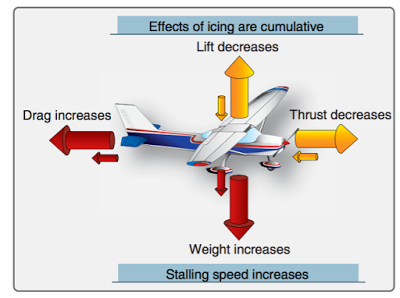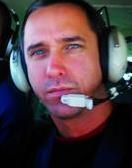
Procedures for Encounter with Freezing RainDuring this time of year, if you are a pilot in the Northern Hemisphere there is a possibility that you will fly into freezing rain. So we thought that now would be a good time for us Caravan Pilots to review procedures in the icing environment.

Please remember that the procedures found below are for the Cessna Model 208B (675 SHP) and no others. If you are flying a different model Caravan, please review your aircraft's FAA approved Abbreviated Checklist or Airplane Flight Manual for that specific model.
Cessna's procedures for Inadvertent encounter with freezing rain or freezing drizzle:
Enroute
- Power - INCREASE to takeoff power (not to exceed 805 degrees ITT or 101.6% Ng).
- Airspeed - MAINTAIN 120 KIAS or greater (110 KIAS if climbing to exit icing).
- De-Ice boots - CYCLE to obtain best possible clearing.
- ATC - NOTIFY and request priority handling to exit condition.
Approach
- Approach - PLAN straight in approach if possible.
- ATC - NOTIFY and request priority handling to exit condition.
- Power - INCREASE to hold airspeed and glidepath (not to exceed 805 degrees ITT or 101.6% Ng).
- Airspeed - 120 KIAS (or greater).
- Flaps 10 degrees
- Airspeed - Maintain 120 KIAS if possible (minimum speed for flight in icing with 10 degrees flaps of 105 KIAS)
- Flaps Up: 120 KIAS
- Flaps 10: 105 KIAS
- Flaps 20: 95 KIAS
- Flaps Up: 110 KIAS
- Flaps 10: 95 KIAS
Landing
1. Recommended airspeed with ice on the airplane:
- Flaps 10: 120 KIAS
- Flaps Up: 110 - 120 KIAS
- Flaps 10: 105 - 110 KIAS
- Flaps 20: 95 - 100 KIAS
If you are a Caravan pilot, I highly recommend that you complete some of Cessna's E-Learning courses on this topic. Courses such as "Caravan Cold Weather Ops" and "Caravan Vodcast Ground Icing Conditions". There are many other interesting courses available, most of which are free and are all available at cessnaelearning.com
Fellow Caravan Pilots, please remember toReview Often and Fly Safeso that you can continue to Love What You Do!

